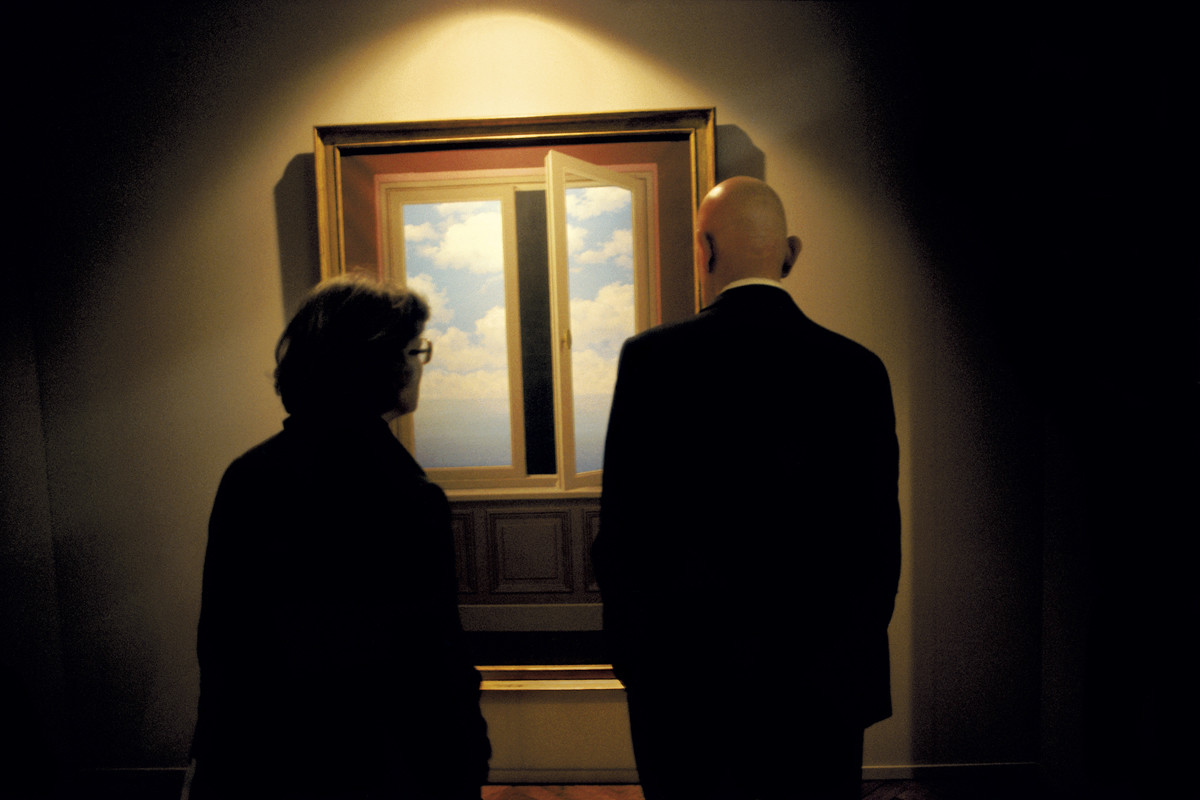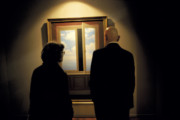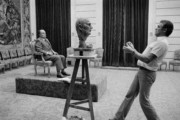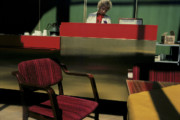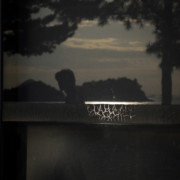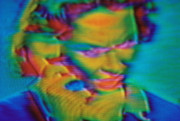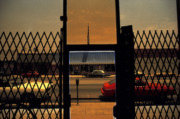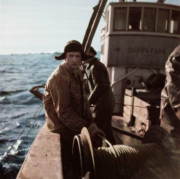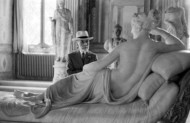Behind the Image: Harry Gruyaert’s Magritte
The photographer reveals how 30 years later, he discovered the true sentiment behind his portrait of a couple observing a Magritte painting
This is a surrealistic story about Magritte, a surrealist painter.
In the 70s, I went to see a Magritte exhibition at The Palais des Beaux-Arts in Brussels. I had my camera on me, but I had been told “no pictures”, so I had left it in the cloakroom. I walked into the first room of the exhibition and I saw this man with a bald head. He had a very strong presence, standing in front of a painting of a man with a bald head and a bowler hat. Furious that I had missed this picture, I went to get my camera back. But I had lost my cloakroom ticket and I had to argue for about ten minutes to get it back.
I ran out of the museum, hiding my camera under my jacket, and took another entrance to get inside the museum. I ran through all the rooms, and I finally caught up with the man in the last room. He was standing next to a woman, and looking at this painting. I discreetly shot three or four pictures.
A few years later, I had an exhibition of my work Made in Belgium at the same Palais des Beaux-Arts. The curator wanted to use this particular photograph as a poster so he went to see Mrs. Magritte—who was still alive—to get her authorization. She liked the picture and thought it might even be a portrayal of herself, which was probably untrue. The poster was printed, but I did not know who the man was. I never talk to people I take pictures of.
A couple of months later, I received a phone call from Brussels. “I am the man with the bald head in your photograph”, the person on the phone said.
"I would like to come to Paris this weekend with the most beautiful girl, and I would like you to photograph her"
-
I don’t know how he found me, because I was living at a girlfriend’s place at the time, and I was not in the telephone book. “I would like you to photograph the most beautiful face in the world” he added. I was surprised, and I wondered what he meant. Did he want me to photograph his face? But he said, “I would like to come to Paris this weekend with the most beautiful girl, and I would like you to photograph her”. I told him I was honored, but I was a street photographer and he should ask for someone who specialized in portraits. He hung up. I was puzzled. I would have liked to have met this man.
Three decades later, I received another phone call from Brussels; It was a woman this time. She asked me if it was me who had taken the picture, and I said yes. Then she explained to me that the man in the photograph was unfortunately dead, but that he was the best friend of her father who was going to turn 95 years old, and that she would love to give him the print. I told her about the different sizes and prices. “Oh that’s expensive” she said, “I will talk to my brother to see if we can afford it”. And then there was a moment of silence. I don’t know why, but I started to tell her the story of the man in the picture. There was another long moment of silence.
“It must have been me,” she said, “but I am not beautiful anymore”. There was an incredible sadness in her voice. Unfortunately, she never called me back. I would have given her the print for free.


